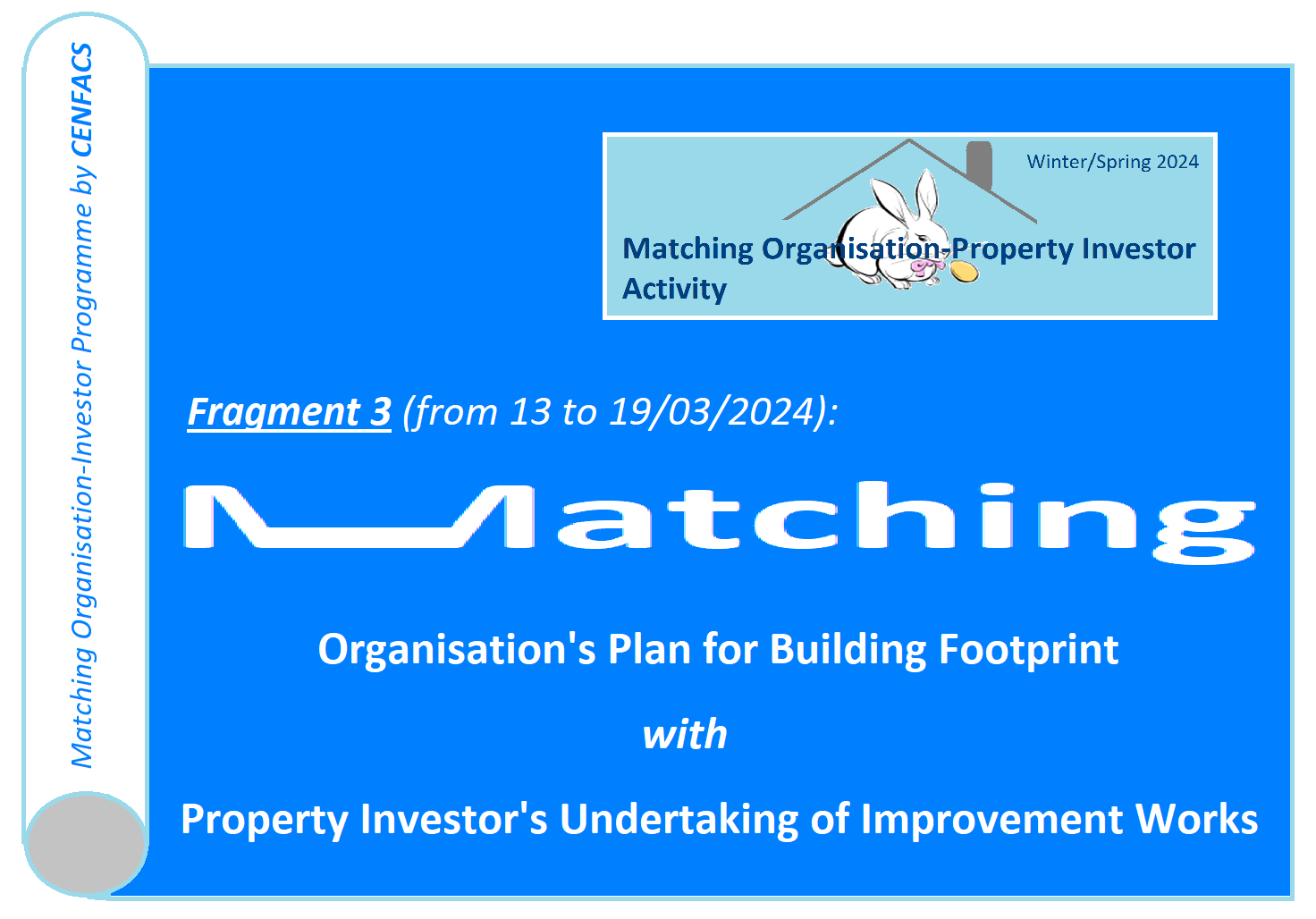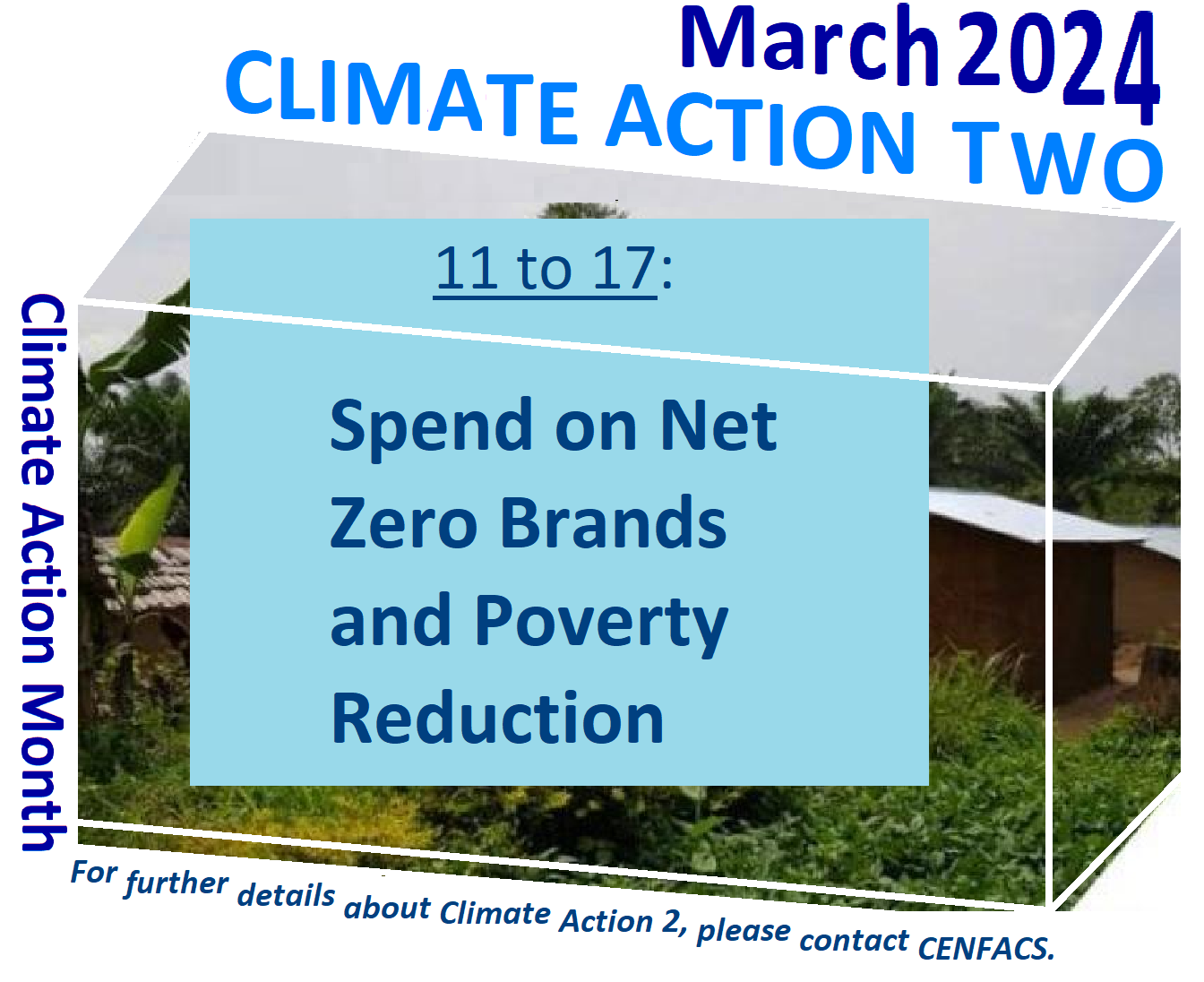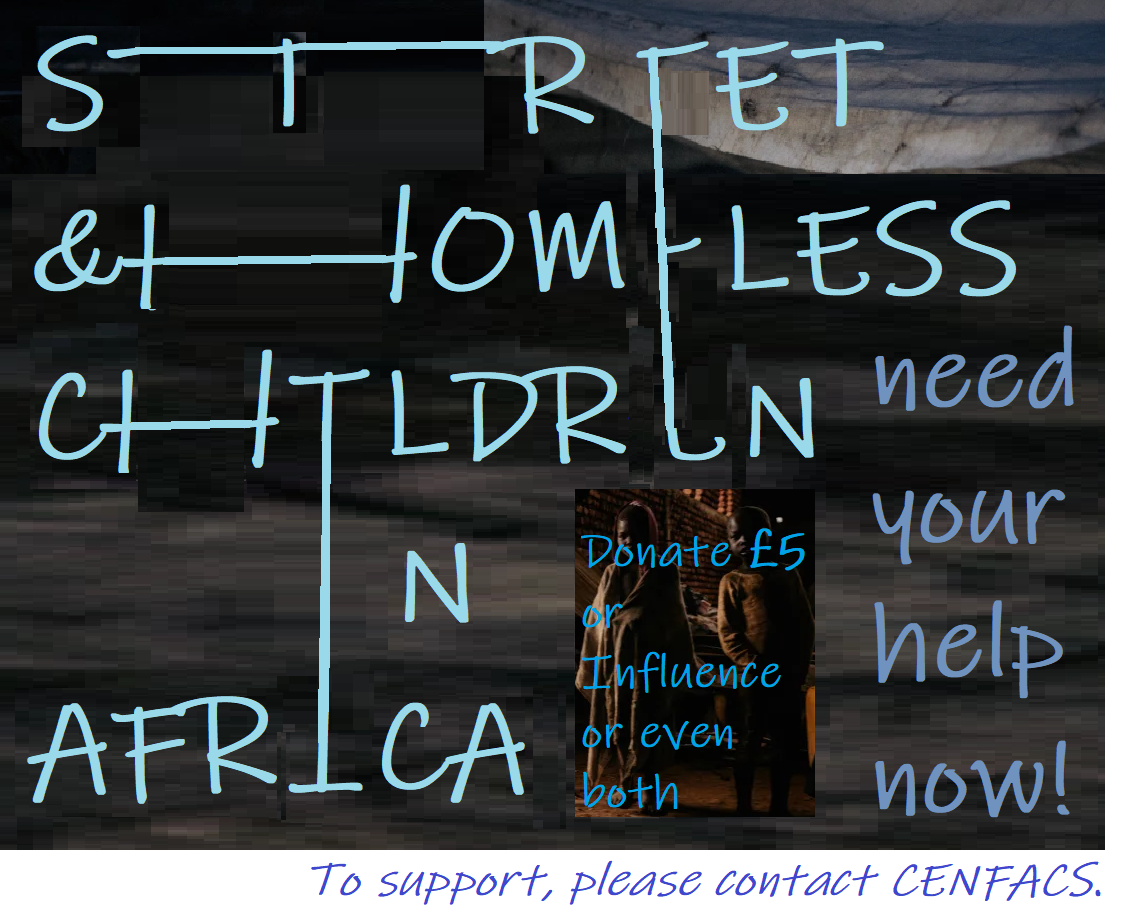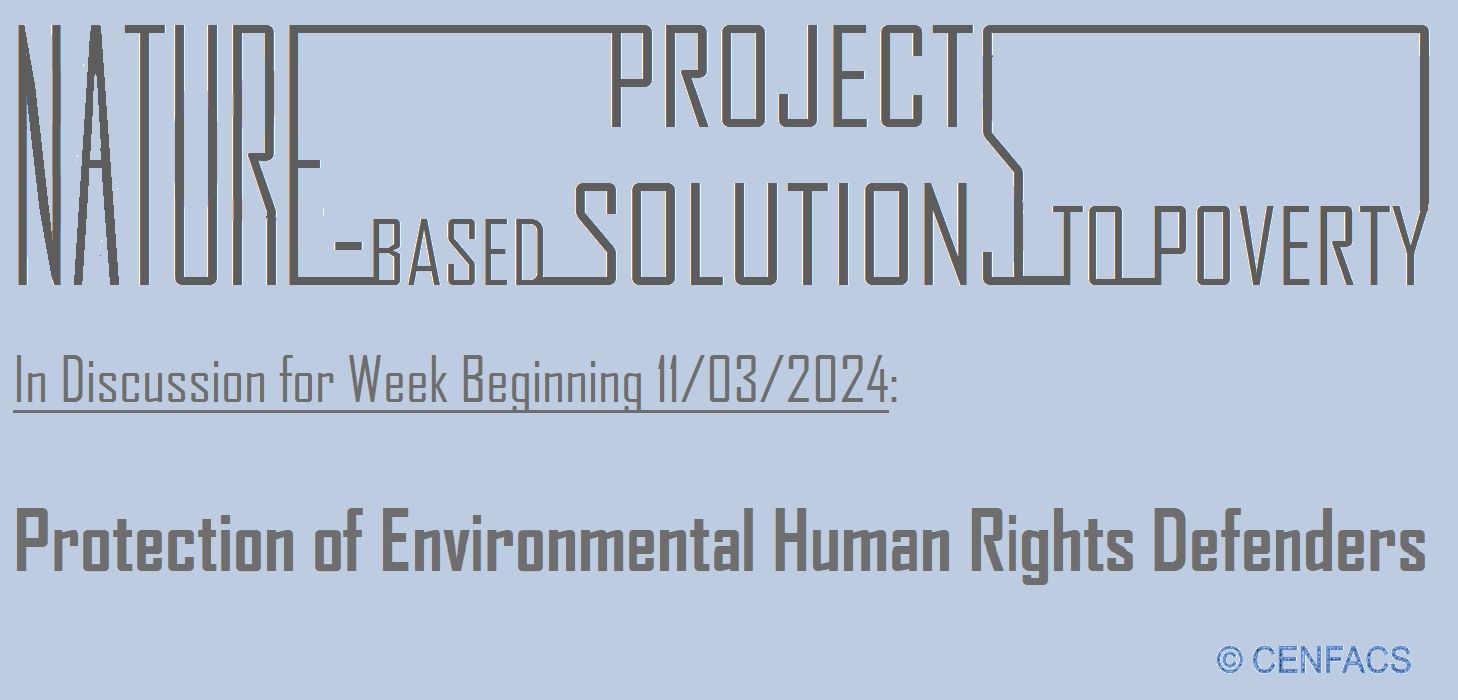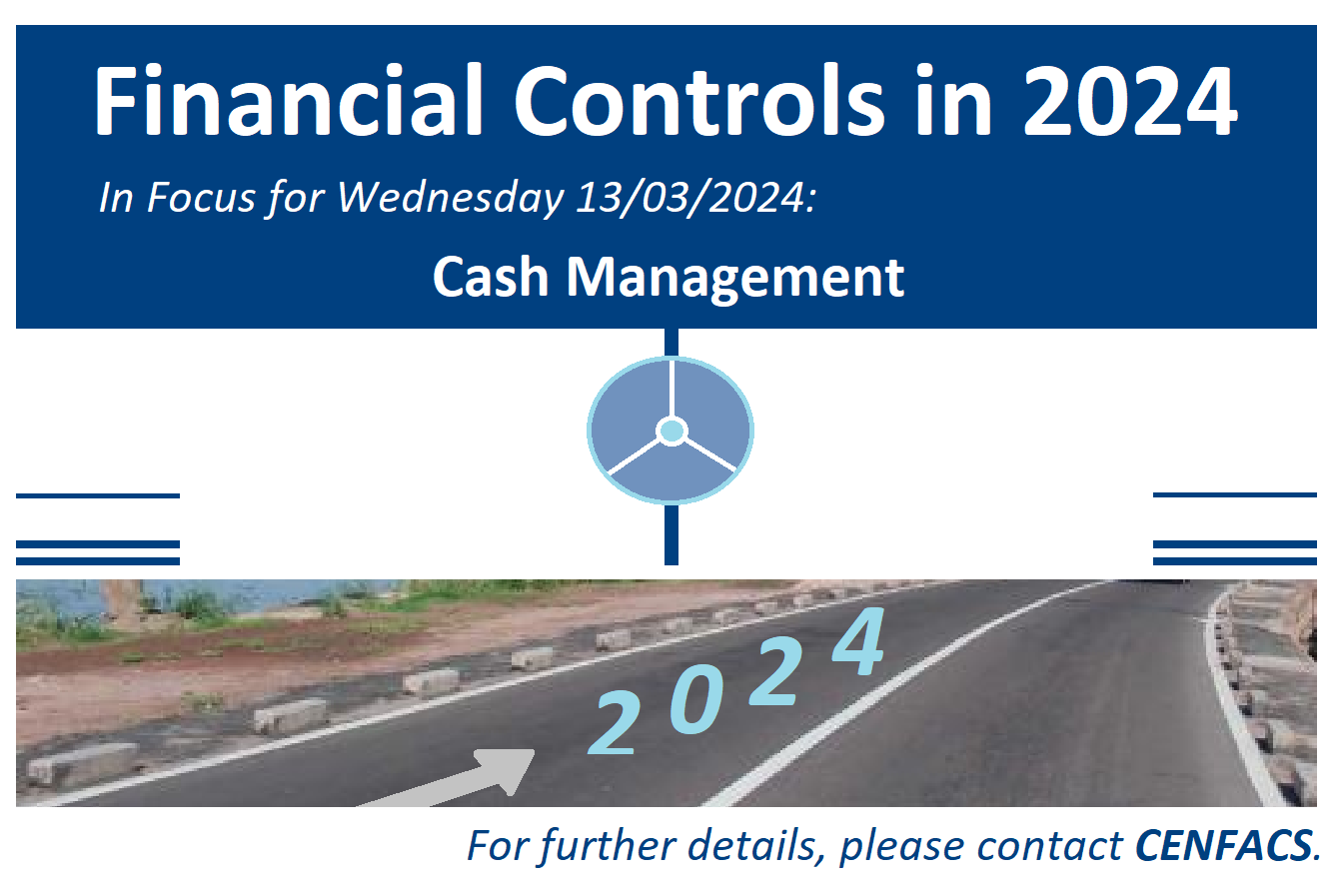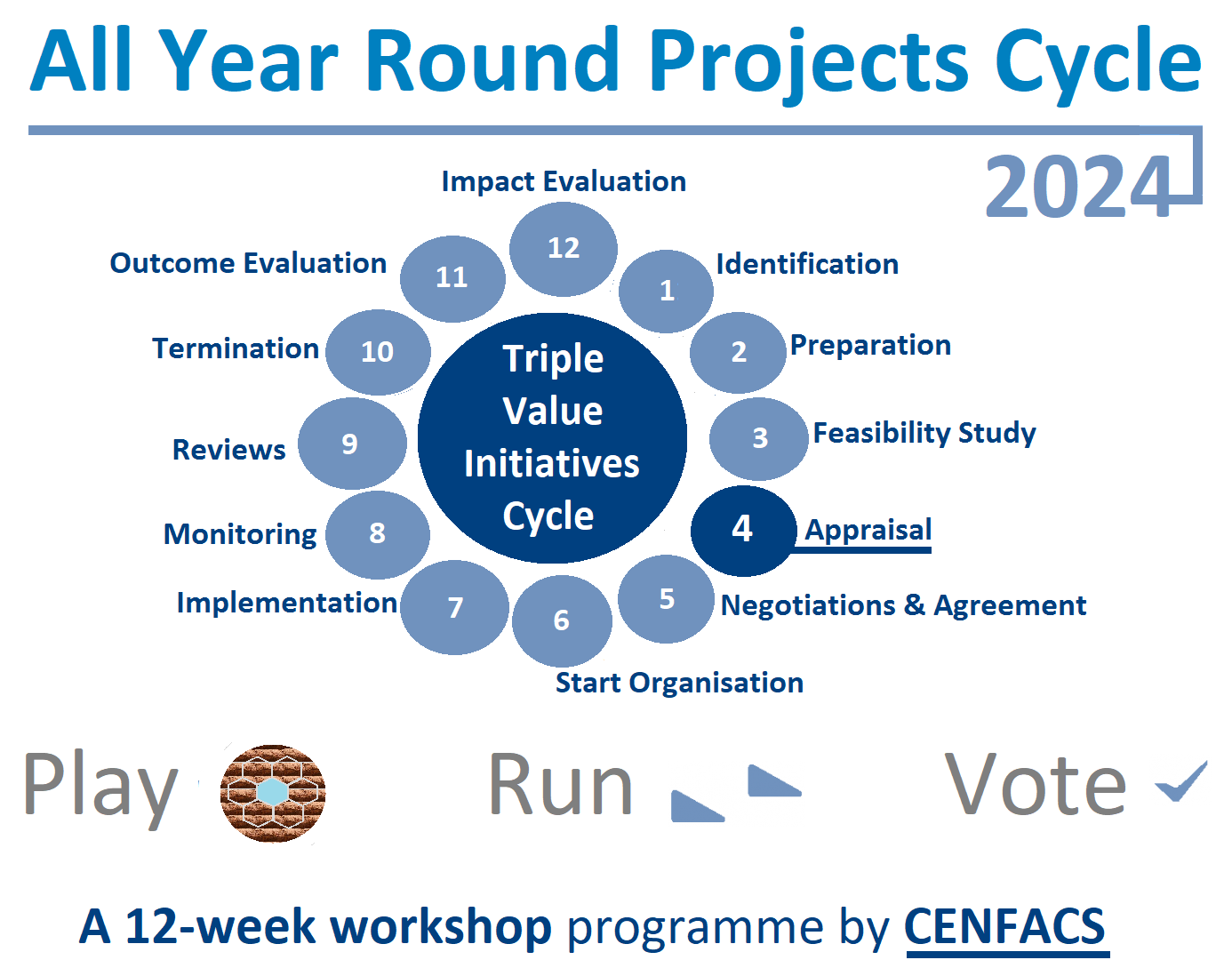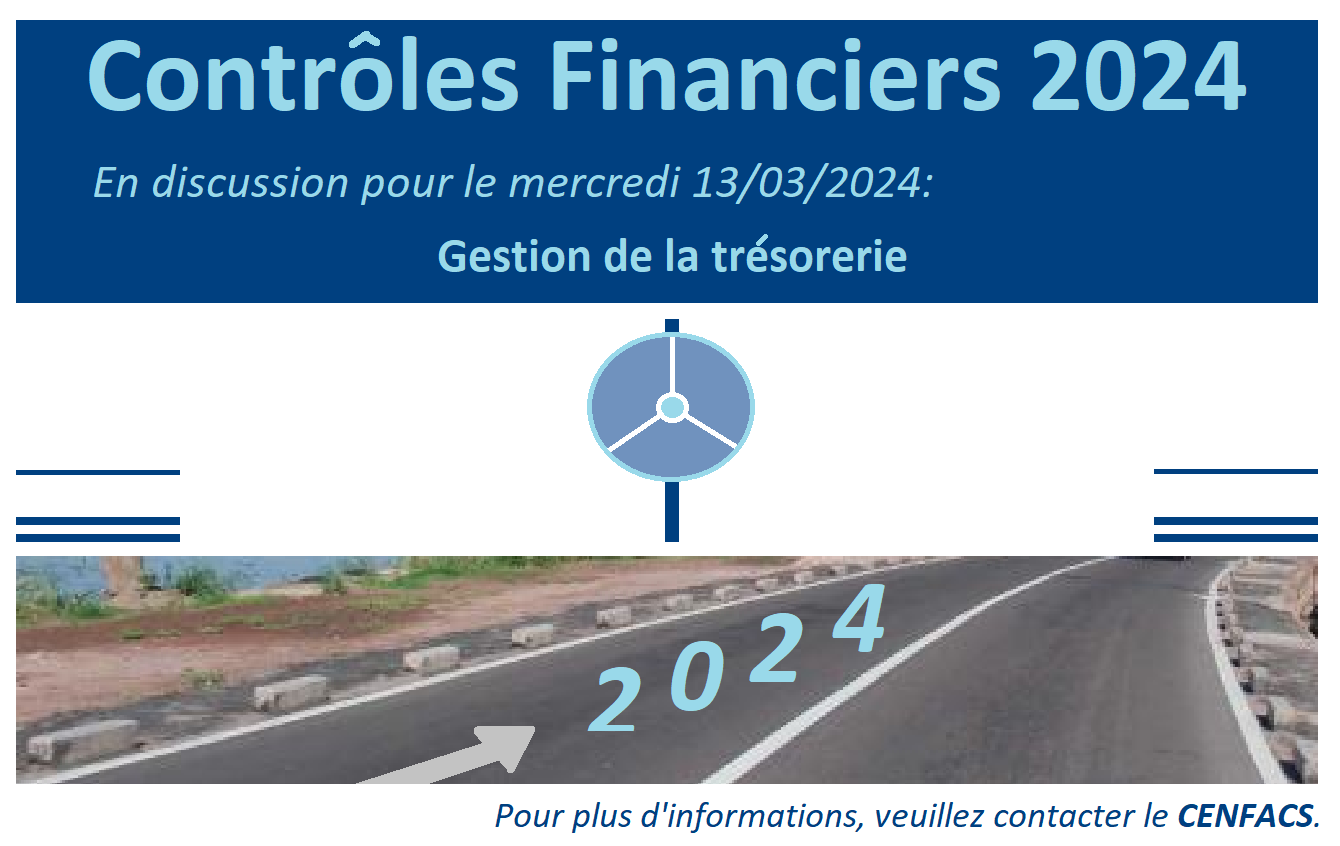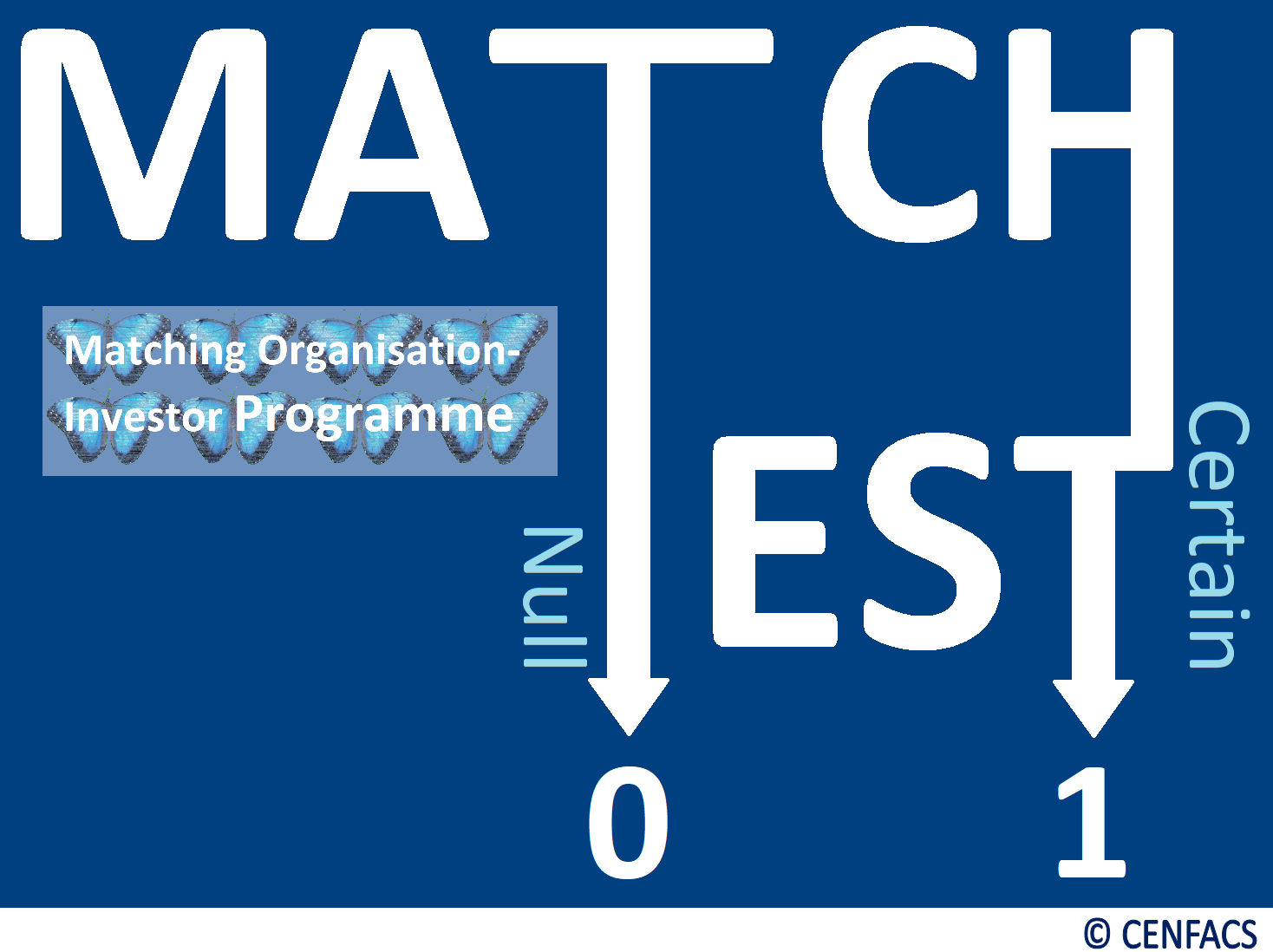Welcome to CENFACS’ Online Diary!
13 March 2024
Post No. 343
The Week’s Contents
• Matching Organisation-Property Investor Winter/Spring 2024 Activity – Fragment 3 (13 to 19/03/2024): Matching Organisation’s Plan for Building Footprint (or Style) with Property Investor’s Undertaking of Improvement Works
• Climate Action 2: Spend on Net Zero Brands and Poverty Reduction (11 to 17/03/2024)
• CENFACS’ Tricennial Year
… And much more!
Key Messages
• Matching Organisation-Property Investor Winter/Spring 2024 Activity –
Fragment 3 (13 to 19/03/2024): Matching Organisation’s Plan of Building Footprint (or Style) with Property Investor’s Undertaking of Improvement Works
Both Africa-based Sister Housing Charitable Organisation (ASHCO) and Not-for-profit (n-f-p) Property Investor scored enough points in the Second Fragment of the Matching Organisation-Property Investor Winter/Spring 2024 Activity. They would like to continue their talks and move to the third round of negotiations, which is Fragment 3.
This third round of talks consists of agreeing on Plan for Building Footprint (or Style) to be presented by ASHCO, and on the Proposals to be made by the n-f-p Property Investor to Undertake any Improvement Works that deem necessary for the housing project. To reach an agreement, each side of this Fragment 3 needs to clarify what they are offering in the negotiation to meet the matching terms and conditions.
If this Fragment 3 is successful, they will move to the next/last fragment. Where the two (i.e., investee and investor) need support, CENFACS will work with each party to fill the gap.
More about Fragment 3 can be found under the Main Development section of this post.
• Climate Action 2: Spend on Net Zero Brands and Poverty Reduction (11 to 17/03/2024)
To achieve net-zero emissions of greenhouse gases by 2050, it requires spending on net zero brands. It equally implies investing in poverty reduction. In other words, it is possible to spend at the same time on net zero products and poverty reduction if one needs to have climate transition action that is inclusive.
For instance, ‘cambridgeassociates.com’ (1) suggests “a more holistic and ambitious approach that integrates a climate lens across all investments [that could] lead to better real world and investment outcomes”.
The holistic and ambitious approach needs to include climate poverty reduction or inequality in climate transitions. This will as well help to transition to a more inclusive and sustainable future.
However, to spend on net-zero products or brands, one needs to know what they are.
• • What Is a Net Zero Brand?
Net zero brands are types of products manufactured by a particular organisation having a net zero strategy, under a specific name. According to ‘megradyclarke.com’ (2),
“Net zero strategy aims at reducing business operational emissions as much as possible, and combined with carbon offsetting balances overall emissions to zero”.
Those who would like to take climate action, they can spend on these brands. Spending on these brands can have some implications for them.
• • Implications for Spending on Net Zero Brands
Spending on net zero brands can imply the following:
√ Being award of and considering these brands when making purchasing decisions
√ Reviewing net zero brands’ content assets
√ Participating in brand test and learning more about their strategy in terms of branding or brand channels
√ Getting to know their campaigns in relation to poverty reduction
√ Monitoring and analysing these brands as well as how good they are compared to brands that are not net zero
√ Staying in tune with their latest developments and their ability to reduce poverty
√ Being informed on their platform updates and news
etc.
Briefly, in keeping informed about the performance of these brands, it helps to make a good decision whether or not to spend on them. Being informed means also not working alone. Working with people around you can help to maintain the net zero momentum.
• • Working with the Community on Spending on Net Zero Brands
As explained in our last post, the all purpose of writing this note is to guide our climate action. In other words, what is key here is to take action. The note is only a guided principle.
For instance, taking action together on spending on net zero brands can be on applying initiatives for this spending to happen; initiatives such as opening up an eco-conscious account with cash back rewards, developing a net zero commitment, taking actionable steps to meet targets on net zero expenses or purchases, transitioning behaviour and practice regarding net zero brands or products, etc.
Those members of our community who would like to work with CENFACS on Spending on Net Zero Brands and Climate Poverty Reduction, they can take climate actions as well as actions on reducing poverty with us.
For any queries or enquiries about Climate Action 2 and Climate Actions Month, please do not hesitate to contact CENFACS.
• CENFACS’ Tricennial Year
2024 has been dedicated as a Transition Year within CENFACS. 2024 is also a Tricennial Year for the idea of CENFACS as 2024 is the year during which we are celebrating the establishment of CENFACS as a Tricennial Creation. In other words, it is now 30 years since the idea of CENFACS was born.
This Tricennial Celebration or the Tricennium kicks off this March 2024. It is a celebration of the remarkable journey of CENFACS as an idea for good. We are remembering CENFACS for its four existential features, which are:
a) CENFACS as a Sustainable Creation
b) CENFACS as a Unique Creation
c) CENFACS as an Inspiring and Transformative Creation
d) CENFACS as a Creation for Hope and Future.
Through Project 30, we will be progressively sharing with our supporters, followers and audiences some information about CENFACS milestones so that they can (re)learn a bit more about CENFACS. We would like as well those who have recently joined us and those who may want to join us, to learn something about CENFACS on the occasion of this Pearl Jubilee.
This coming Summer, we shall come back on CENFACS as a Tricennial Creation, particularly in June which is the Creation Month for CENFACS.
In meantime, those who would like to know more about the Tricennial Creation, they can contact CENFACS. Likewise, we shall keep informed our supporters, followers and members about any Tricennial events that may take place and the way of supporting and engaging with these events.
Happy Pearl Jubilee to CENFACS!
Extra Messages
• Nature Projects and Nature-based Solutions to Poverty – In Focus for Week Beginning 11/03/2024: Protection of Environmental Human Rights Defenders
• Financial Controls 2024 – In Discussion for Wednesday 13/03/2024: Cash Management
• All-year Round Projects Cycle (Triple Value Initiatives Cycle) – Step/Workshop 4: Appraising Your Play, Run and Vote Projects
• Nature Projects and Nature-based Solutions to Poverty – In Focus for Week Beginning 11/03/2024: Protection of Environmental Human Rights Defenders
This activity will deal with the full protection of environmental human rights defenders. As ‘ohchr.org’ (3) puts it
“They need and deserve the protection given to their activities by the Declaration on human rights defenders” (p. 5)
To explain this activity, let us summarise its aim and what it consists of.
• • Aim and Constituting Elements of Activity 4
a) Aim of Activity 4
The aim of this activity is about stopping any perpetrators of violations against human rights defenders, particularly (but not limited to) those working nature issues and nature-based solutions to poverty.
b) What Does Activity 4 Consist of?
This Activity is a qualitative research which consists of gathering information in-depth insights and opinions from a group of our members about people acting to address any human rights on behalf of individuals or groups, as well as people who promote, protect and realise economic, social, cultural and environmental rights.
For those who would like to engage with Activity 4 and/or any of the activities covered so far in our presentation of Nature Projects and Nature-based Solutions to Poverty, they should not hesitate to contact CENFACS.
• • Concluding Words about Third Series of Nature Projects and Nature-based Solutions to Poverty
Activity 4 closes our Third Series of Nature Projects and Nature-based Solutions to Poverty. But, it does not end our work on nature.
We hope that those who have been following our work on nature have found this third series contributing to the debate over nature and the wellbeing of nature. Since work on nature is unfinished business, we shall resume it with the fourth series. We shall inform our followers, supporters and audiences about the working plan on this fourth series when we are ready. In meantime, for those who would like to find out more about Nature Projects and Nature-based Solutions to Poverty, they can communicate with CENFACS.
• Financial Controls 2024 – In Discussion for Wednesday 13/03/2024: Cash Management
The last financial control we planned for this Winter 2024 Financial Controls Project is Cash Management. Indeed, all households and families manage cash to run their daily lives. To understand what we are talking about let us look at the aim of this financial control, the meaning of cash management and how CENFACS can work with the community on cash management.
• • The Aim of This Financial Control
The aim of learning this financial control (or cash management) is to reduce household/family poverty through the building of cash flow statement which will show how much cash is available for households/families, and which will include cash from three types of activities: operating, investing and financing activities.
Households/families can use cash management to get the best result in managing their cash assets. They can even refer to financial instruments involved in cash management. Some households/families can undertake this exercise. Those ones that have some difficulties in doing it, CENFACS can work with them.
• • Brief Understanding of Cash Management
According to ‘corporatefinanceinstitute.com’ (4),
“Cash management, also known as treasury management, is the process that involves collecting and managing cash flows from the operating, investing and financing activities of a company”.
Like a company, households or families manage their cash. They can use cash management to achieve the most efficient and effective use of their cash to meet their needs.
• • Work with Households/Families on Cash Management
Working with those households/families making our community could be about the following:
√ Improving their understanding of the cash flow cycle
√ Developing cash flow management skills
√ Helping them to make a good capital investment
√ Supporting them to use cash management to settle debt obligations
√ Assisting them on how to handle cash management to deal with their daily or operating expenses
√ Showing them how to allocate their cash assets or cash to invest when opportunities arise
√ Finding solutions to build savings from cash
√ Building cash statements with them to record all their cash inflows and outflows
etc.
Working with them could also be about suggesting to them cash management online tools and resources for those who would like to dive into self-study.
The above is the fifth financial control we wanted to share with our users or beneficiaries who may be households. If anyone of our members need support regarding their financial controls and in particular Cash Management within their household, they should not hesitate to contact CENFACS.
• • Concluding Note about Winter 2024 Financial Controls
Cash Management as financial control closes what we planned to work with the community during this Winter 2024. We hope the notes presented including the exercises and suggestions made so far, with respect to the Financial Controls project, have been useful and poverty-relieving. We are still working on this project. If there are any updates or events or even news about it, we shall inform you/the community.
• All-year Round Projects Cycle (Triple Value Initiatives Cycle) –
Step/Workshop 4: Appraising Your Play, Run and Vote Projects
To carry out this step/workshop 4, we are going to briefly explain what this step/workshop is about and give an example about it.
• • Appraising Your Play, Run and Vote Projects
It is about assessing the feasibility, viability and potential impact of a proposed project. It means that an all-year-round project user will proceed with the following:
identify the project, screen it, scope it, analyse its market, technically study it as feasible, assess its financial viability and its economic impact, analyse risks, examine environmental and social impact and report its appraisal.
Because All-year Round Projects are such small and practical initiatives, there is a need to simply the appraisal relating to it. To simply the matter, we are going to limit to financial appraisal.
• • Example of Financial Appraisal: Your Project about Running for Poverty Reduction
Let say you want to run 4 km.
You have two options.
~ Option 1
You could simply get out your home start running without thinking of any financial appraisal.
~ Option 2
You can conduct a basic financial appraisal by asking yourself if you need to buy a bottle of water, a pair of trainers, a clock or watch to time yourself, the frequency of your run activity (e.g., once a week or every particular day of the week), decide whether you want run alone or as a group or even join a local group of runners where you live, etc.
You can even work out how much it costs to run in open space like a park compared to a close space such as a gym.
You can as well assess the benefit of running in terms of your health and general wellbeing.
You can even include a fundraising element so that money to be raised through your running hobby goes to good causes such as CENFACS’ noble and beautiful ones.
In this second option, you can carry out more appraisal and come out with a sort of financial plan in terms of basic costs and benefits of running. In project planning terms, it means you have financially appraised Your Project about Running for Poverty Reduction.
For those who would like to dive deeper into the appraisal of their Play or Run or Vote project, they should not hesitate to contact CENFACS.
Message in French (Message en français)
• Contrôles financiers 2024 – En discussion pour le mercredi 13/03/2024: Gestion de la trésorerie
Le dernier contrôle financier que nous avons prévu pour ce projet de contrôles financiers de l’hiver 2024 est la gestion de la trésorerie. En effet, tous les ménages et toutes les familles gèrent de l’argent liquide pour gérer leur vie quotidienne. Pour comprendre de quoi nous parlons, regardons l’objectif de ce contrôle financier, la signification de la gestion de trésorerie et comment le CENFACS peut travailler avec la communauté sur la gestion de trésorerie.
• • L’objectif de ce contrôle financier
L’objectif de l’apprentissage de ce contrôle financier (ou gestion de trésorerie) est de réduire la pauvreté des ménages ou familles grâce à l’établissement d’un tableau des flux de trésorerie qui indiquera combien d’argent est disponible pour les ménages ou familles, et qui comprendra des liquidités provenant de trois types d’activités : les opérations, les investissements et les finances.
Les ménages ou familles peuvent utiliser la gestion de trésorerie de manière optimale dans la gestion de leurs avoirs en espèces. Ils peuvent même faire référence à des instruments financiers impliqués dans la gestion de trésorerie. Certains ménages ou familles peuvent entreprendre cet exercice. Ceux qui ont des difficultés à le faire, le CENFACS peut travailler avec eux.
• • Brève compréhension de la gestion de trésorerie
D’après le « corporatefinanceinstitute.com » (4),
« La gestion de trésorerie, également connue sous le nom de gestion des espèces, est le processus qui consiste à collecter et à gérer les flux de trésorerie provenant des activités d’exploitation, d’investissement et de financement d’une entreprise. »
À l’instar d’une entreprise, les ménages ou les familles gèrent leur trésorerie. Ils peuvent utiliser la gestion de trésorerie pour obtenir l’utilisation la plus efficiente et la plus efficace de leur argent pour répondre à leurs besoins.
• • Travailler avec les ménages ou familles sur la gestion de la trésorerie
Travailler avec les ménages ou les familles qui forment notre communauté pourrait porter sur les éléments suivants :
√ Améliorer leur compréhension du cycle des flux de trésorerie
√ Développer des compétences en gestion de trésorerie
√ Les aider à faire un bon investissement en capital
√ Les assister à utiliser la gestion de trésorerie pour régler leurs dettes
√ Les conseiller à gérer la gestion de leur trésorerie pour faire face à leurs dépenses quotidiennes ou d’exploitation
√ Leur montrer comment allouer leurs liquidités ou leurs espèces à investir dans le capital de leurs ménages ou familles
√ Trouver des solutions pour épargner à partir de liquidités
√ Établir avec eux des états de trésorerie pour enregistrer toutes leurs entrées et sorties de trésorerie
etc.
Travailler avec eux pourrait également consister à leur suggérer des outils et des ressources en ligne pour la gestion de trésorerie pour ceux qui souhaitent se lancer dans l’auto-apprentissage.
Ce qui précède est le cinquième contrôle financier que nous voulions partager avec nos membres ou bénéficiaires qui peuvent être des ménages. Si l’un de nos membres a besoin d’aide concernant ses contrôles financiers et en particulier la gestion de trésorerie au sein de son foyer, il ne doit pas hésiter à contacter le CENFACS.
• • Note de conclusion sur les contrôles financiers de l’hiver 2024
La gestion de trésorerie en tant que contrôle financier clôt ce que nous avions prévu de travailler avec la communauté au cours de cet hiver 2024. Nous espérons que les notes présentées, y compris les exercices et les suggestions faites jusqu’à présent, en ce qui concerne le projet de contrôle financier, ont été utiles et permettront de réduire la pauvreté. Nous travaillons toujours sur ce projet. S’il y a des mises à jour ou des événements ou même des nouvelles à ce sujet, nous vous en informerons, vous ou la communauté.
Main Development
• Matching Organisation-Property Investor Winter/Spring 2024 Activity – Fragment 3 (13 to 19/03/2024): Matching Organisation’s Plan for Building Footprint (or Style) with Property Investor’s Undertaking of Improvement Works
Both parties (i.e., Africa-based Sister Housing Charitable Organisation and Not-for-profit Property Investor) have made some steady progress so far as they continue to score points; points which are enough to enable them to enter the third stage of the matching talks. These matching talks will be about finding ways to reach an agreement between Organisation’s Plan for Building Footprint (or Style) with Property Investor’s Undertaking of Improvement Works.
To explain what is going to happen in this Fragment 3, we have organised our notes around the following headings:
σ Africa-based Sister Housing Charitable Organisation’s Plan for Building Footprint
σ Not-for-profit Property Investor’s Undertaking of Improvement Works
σ The Match or Fit Test.
Let us look at each of these headings.
• • Africa-based Sister Housing Charitable Organisation’s Plan for Building Footprint
This is the stage for ASHCO to establish two key points: the amount of accommodation required and project beneficiaries’ preferred building style.
To begin this stage, let us explain building footprint.
• • • What Is Building Footprint?
To explain it, we are going to refer to what ‘cdema.org’ (5) argues about it, which is
“A building footprint provides the outline of a building drawn along the exterior walls, with a description of the exact size, shape and location of its foundation. Building footprint is the most basic information necessary for evaluating the vulnerabilities of a building for a specific hazard. It represents the total area of a building and provides a better description of its spatial characteristics compared to a point representation in terms of spatial location, form distribution, floor space ratio, and relationship between buildings and other objects (topological, orientation, proximity, etc.)”.
What is important is not only to have a well designed plan for building footprint, but to present a building footprint that can help to win the argument to attract property investment or investor. It makes sense as well to consider in this plan net zero elements conducing to reducing greenhouse gas emissions that may arise directly from building activities or indirectly from the purchase of energy linked to the property.
This well crafted plan for building footprint will serve a basis for negotiation by Africa-based Sister Housing Charitable Organisation (ASHCO) in order to reach an agreement with potential not-for-profit (n-f-p) property investors.
• • • What ASHCO Can Do to Reach an Agreement
In this Fragment 3, ASHCO needs to show that the different elements of the building footprint stick together. ASHCO also has to provide both qualitative and quantitative evaluation dealing with any issues that may arise from possible vulnerabilities to the building. ASHCO owes as well to specify how any hazards or potential threats to the building will be addressed. In other words, ASHCO is required to demonstrate that it has a well organised plan ready to address any unpredictable and potential events to the building, rather than reacting under the influence of these events when they occur.
Since the n-f-p property investor is looking for a coherent and well structured plan for building footprint, ASHCO must make sure that its plan stand out of the crowd. ASHCO is therefore required to provide a high-quality crafted plan for building footprint as well as uphold openness and transparency for any questions that n-f-p property investor may raise in relation to the plan.
It is the stage at which ASHCO needs to unhesitatingly speak and without fear about the architecture and structural survey of the building in terms of the building structure and soundness. ASHCO can as well mention the number of people who will benefit from the project, how many amongst them will be lifted out of poverty because its intervention, the impact of the project on local area and local people, etc.
Additionally, ASHCO can explain the approach or methodology it has used to factorise external variables (such as economic, environmental, engineering, construction and political factors or indicators) in the building footprint.
In this design of the plan for building footprint, ASHCO can speak about the advice and guidance received from house designers, property surveyors, property developers and architects. This can indicate that it has consulted and listened to experts and professionals in the field of house design.
It can further add testimonies, evidence of need and any research findings from and about the people where the project will be implemented to demonstrate that the project has baseline documents and is based on genuine local needs and demand. This will demonstrate that ASHCO is not working alone.
Briefly, throughout its plan for building footprint ASHCO must show that is leading the way and the project has something noble to offer and can generate tangible and palpable results in terms of housing poverty reduction. The project is worth undertaking and commends a genuine case or value for investment and for poverty relief.
• • Not-for-profit Property Investor’s Undertaking of Improvement Works
Depending on the property investment strategy and goals, the n-f-p property investor may decide to undertake works regardless of the type, size and readiness of the property. These investment works can be of various kinds. But, what are improvement works from the property investor’s point of view.
• • • Basic Understanding of Improvement Works
According to ‘property-tax-portal.co.uk’ (6), an improvement is any item that enhances the value of the overall asset.
The same ‘property-tax-portal.co.uk states that for tax relief purpose, improvement works are also considered as capital expenditure (or capital improvement), which is a permanent or long-lasting enhancement to an asset or its outright replacement.
The n-f-p property investor may decide to provide an item that is a capital where it enhances the value of the overall asset. In such case, the n-f-p property investor needs to ensure that whatever he/she provides as item, he/she will have the chance to find an organisation that will accept his/her model of undertaking of improvement works. But, what do improvement works include?
• • • Types of Improvement Works
Improvement works, which should not be confused with repair works, include the following ones:
Structural works, brickwork, internal improvements, external fabric work, general builders’ work, flooring works, painting and decoration, alterations and conversions, windows and doors, electrical works, bathroom and kitchen installations, roof works, guttering, etc.
To undertake these improvement works, the n-f-p property investor needs to show that they will be compliant with local legislation and he/she will make a good choice of contractors and is clear about what he/she wants. He/she will make sure that his/her undertaking of improvement works will have the chance to match the plan for building footprint from the organisation’s perspective.
• • The Match or Fit Test
As part of the match or fit test, n-f-p property investor’s undertaking of improvement works needs to match ASHCO’s plan for building footprint. The match should be perfect or close in order to reach an agreement. If there is a huge or glaring difference between the two, the probability or chance of having an agreement at this third round of negotiations could be null or uncertain.
• • • Impact Advice to ASHCO and Guidance to n-f-p Property Investor
CENFACS can impact advise ASHCO to improve its plan for building footprint. CENFACS can as well guide n-f-p property investors with impact to ameliorate their undertaking of improvement works to a format that can be acceptable by potential ASHCOs.
CENFACS’ impact advice for ASHCOs and guidance on impact investing for n-f-p property investor will be impartial and help each of them (i.e., investee and investor) to make informed decisions and to reduce the likelihood of any significant losses or misunderstandings or mismatches.
• • • The Rule of the Matching Game
The rule of the game is the more property investors are attracted by ASHCOs’ plan for building footprint the better for ASHCOs. Likewise, the more ASHCOs are willing to accept property investors’ undertaking of improvement works the better for investors. In this respect, the matching game needs to be a win-win one to benefit both players (i.e., organisation and investor).
The above is the third fragment of the Matching Organisation-Property Investor Winter/Spring 2024 Activity.
Those potential organisations seeking investment and n-f-p property investors looking for organisations who are interested in it, they can contact CENFACS to arrange the match or fit test for them. They can have their fit test carried out by CENFACS’ Hub for Testing Hypotheses.
For any queries and/or enquiries about this third fragment of Matching Organisation-Property Investor Winter/Spring 2024 Activity and/or the programme itself, please do not hesitate to contact CENFACS.
_________
• References
(1) https://www.cambridgeassociates.com/insight/investing-for-a-net-zero-world-a-guide-for-investors/ (accessed in March 2024)
(2) https://www.megradyclarke.com/our-services/net-zero-strategies/?msclkid=6a7e45ebfa4b127fe68f2001e981ba40 (accessed in March 2024)
(3) https://www.ohchr.org/en/special-procedures/sr-human-rights-defenders/about-human-rights-defender# (accessed in March 2024)
(4) https://corporatefinanceinstitute.com/resources/career-map/sell-side/capital-markets/cash-management/ (accessed in March 2024)
(5) https://www.cdema.org/virtuallibrary/index.php/charim-hbook/data-management-book/5-elements-at-risk-data/5-2-building-footprint-maps# (accessed in March 2024)
(6) https://www.property-tax-portal.co.uk/repairs-vs-improvements-why-its-important_shtml (accessed in March 2024)
_________
• Help CENFACS Keep the Poverty Relief Work Going this Year
We do our work on a very small budget and on a voluntary basis. Making a donation will show us you value our work and support CENFACS’ work, which is currently offered as a free service.
One could also consider a recurring donation to CENFACS in the future.
Additionally, we would like to inform you that planned gifting is always an option for giving at CENFACS. Likewise, CENFACS accepts matching gifts from companies running a gift-matching programme.
Donate to support CENFACS!
FOR ONLY £1, YOU CAN SUPPORT CENFACS AND CENFACS’ NOBLE AND BEAUTIFUL CAUSES OF POVERTY REDUCTION.
JUST GO TO: Support Causes – (cenfacs.org.uk)
Thank you for visiting CENFACS website and reading this post.
Thank you as well to those who made or make comments about our weekly posts.
We look forward to receiving your regular visits and continuing support throughout 2024 and beyond.
With many thanks.
